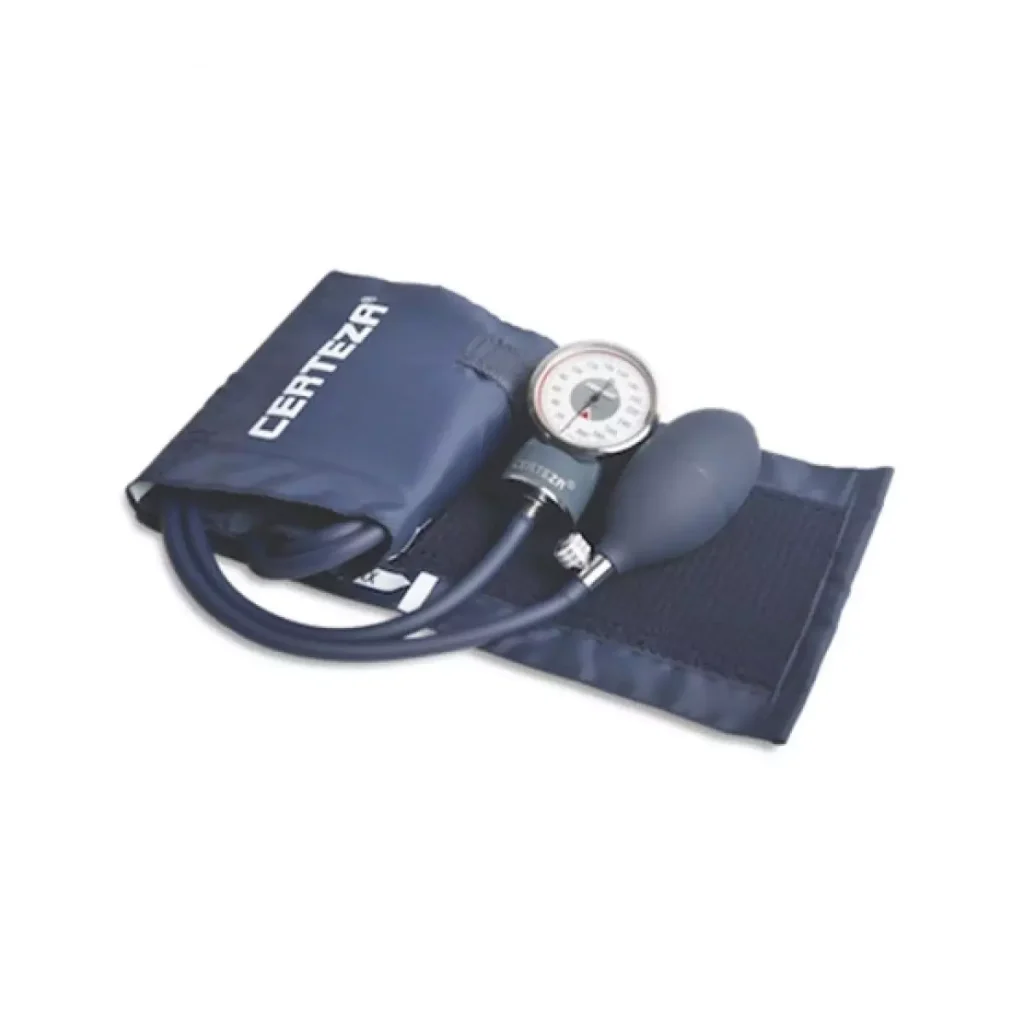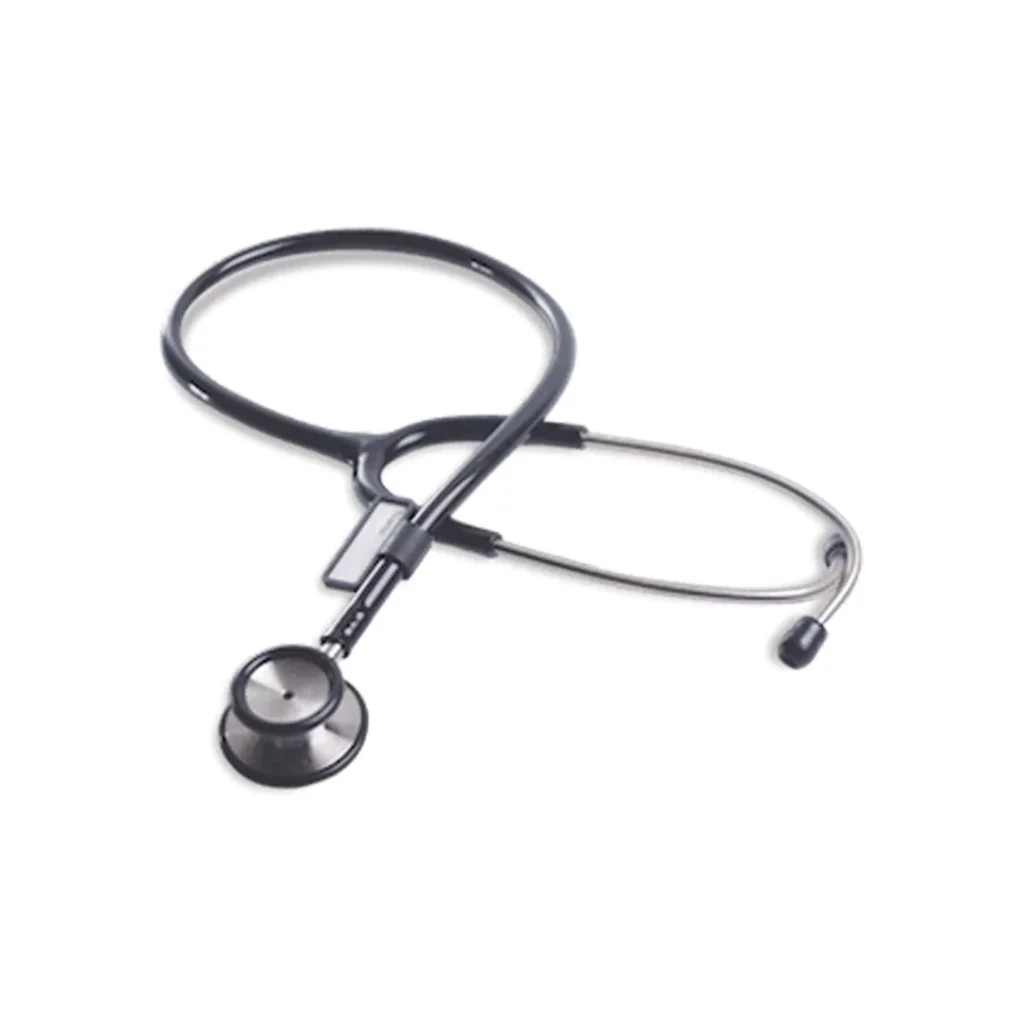- Your cart is empty
- Continue Shopping
What is the Difference Between a Sphygmomanometer and a Stethoscope?

In medical diagnostics, difference Between a sphygmomanometer and a Stethoscope the sphygmomanometer and the stethoscope stand out as two indispensable tools. While both are crucial for assessing cardiovascular health, they serve distinct purposes and operate on different principles. This article delves into the fundamental differences between these two medical instruments, exploring their functions, types, and roles in healthcare.
Table of Contents
Introduction to Medical Diagnostic Tools
Medical diagnostics rely heavily on various tools and instruments to assess, diagnose, and monitor patients’ health conditions. Among these, the sphygmomanometer and the stethoscope are prominently used, especially in cardiovascular assessments. Understanding these instruments’ unique functions and applications is vital for both healthcare professionals and patients.
What is a Sphygmomanometer?
A sphygmomanometer is a medical device used to measure blood pressure. Blood pressure is a critical parameter indicating the force of blood against the walls of arteries. The sphygmomanometer comprises an inflatable cuff, a measuring unit (either mercury, aneroid, or digital), and a mechanism for inflation, typically a bulb and valve or an electronic pump.
Types of Sphygmomanometers
Sphygmomanometers come in three primary types:
- Mercury Sphygmomanometer: Considered the gold standard for accuracy, this type uses a mercury column to measure pressure. The height of the mercury column correlates directly with the blood pressure reading.
- Aneroid Sphygmomanometer: This type uses a mechanical manometer with a dial. It is portable and requires regular calibration to maintain accuracy.
- Digital Sphygmomanometer: Commonly used for home monitoring, this type employs electronic sensors and displays the reading on a digital screen. It is user-friendly but may need to be more accurate than the other two types.
How Does a Sphygmomanometer Work?
The sphygmomanometer works by temporarily stopping blood flow in the artery with an inflatable cuff. As the cuff inflates, it compresses the brachial artery. The healthcare provider slowly releases the pressure in the cuff while listening with a stethoscope or watching the digital display. The point at which blood flow resumes and the sounds of blood flow (Korotkoff sounds) are first heard indicates the systolic pressure. When the sounds disappear, it means the diastolic pressure.

What is a Stethoscope?
A stethoscope is a medical instrument used primarily to listen to sounds produced within the body, particularly those of the heart and lungs. It consists of a chest piece with a diaphragm, bell, tubing, and earpieces.
Types of Stethoscopes
Stethoscopes are generally categorized into:
- Acoustic Stethoscopes: The most common type, these use sound waves transmitted through the chest piece, tubing, and into the earpieces. They can have a single or dual head (diaphragm and bell).
- Electronic Stethoscopes amplify body sounds electronically, providing more precise and distinct auscultation. They often come with features like recording and playback.
- Fetal Stethoscopes: Specifically designed to listen to the fetal heartbeat during pregnancy, these have a unique shape to accommodate this purpose.
How Does a Stethoscope Work?
The stethoscope works by capturing sound waves generated by internal organs. The diaphragm of the chestpiece captures high-frequency sounds, while the bell is more effective for low-frequency sounds. These sound waves travel through the tubing to the earpieces, allowing the healthcare provider to hear internal sounds.
Difference Between a Sphygmomanometer and a Stethoscope
The primary difference between a sphygmomanometer and a stethoscope lies in their functions:
- Sphygmomanometer: Measures blood pressure, a critical indicator of cardiovascular health.
- Stethoscope: Used for auscultation, or listening to internal body sounds, to diagnose and monitor various conditions.
Usage in Clinical Settings
In clinical settings, the sphygmomanometer and stethoscope are often used together, especially during routine physical examinations and cardiovascular assessments.
Measuring Blood Pressure
To measure blood pressure, a healthcare provider wraps the sphygmomanometer cuff around the patient’s upper arm and inflates it to stop blood flow. Using a stethoscope, the provider listens for the Korotkoff sounds as the cuff deflates, determining systolic and diastolic pressures.
Auscultation
Auscultation involves using a stethoscope to listen to the heart, lungs, and other organs. For instance, it helps detect heart murmurs, lung infections, and bowel sounds, providing vital clues about the patient’s health.
Importance in Cardiovascular Health
Both instruments are crucial in diagnosing and managing cardiovascular conditions. High blood pressure, detected using a sphygmomanometer, can lead to serious health issues like heart attack and stroke. Meanwhile, auscultation with a stethoscope can identify abnormal heart sounds indicative of valve disorders or arrhythmias.

Technological Advancements
Technological advancements have significantly improved the functionality and accuracy of both instruments.
Digital Innovations
Digital sphygmomanometers have made blood pressure monitoring more accessible and convenient, allowing patients to track their health at home. Similarly, electronic stethoscopes provide enhanced sound quality and additional features like recording, which are valuable in modern medical practice.
Integration with Health Systems
Both instruments are increasingly integrated with digital health systems, allowing for better data tracking and analysis. This integration helps in remote monitoring and telemedicine, improving patient outcomes and accessibility to healthcare.
Conclusion
The sphygmomanometer and stethoscope are essential tools in medical diagnostics, each serving unique and complementary roles. While the sphygmomanometer measures blood pressure, the stethoscope aids in auscultation, providing critical information about cardiovascular and respiratory health. Understanding the differences and applications of these instruments enhances their practical use in clinical practice, contributing to better patient care and health outcomes.

